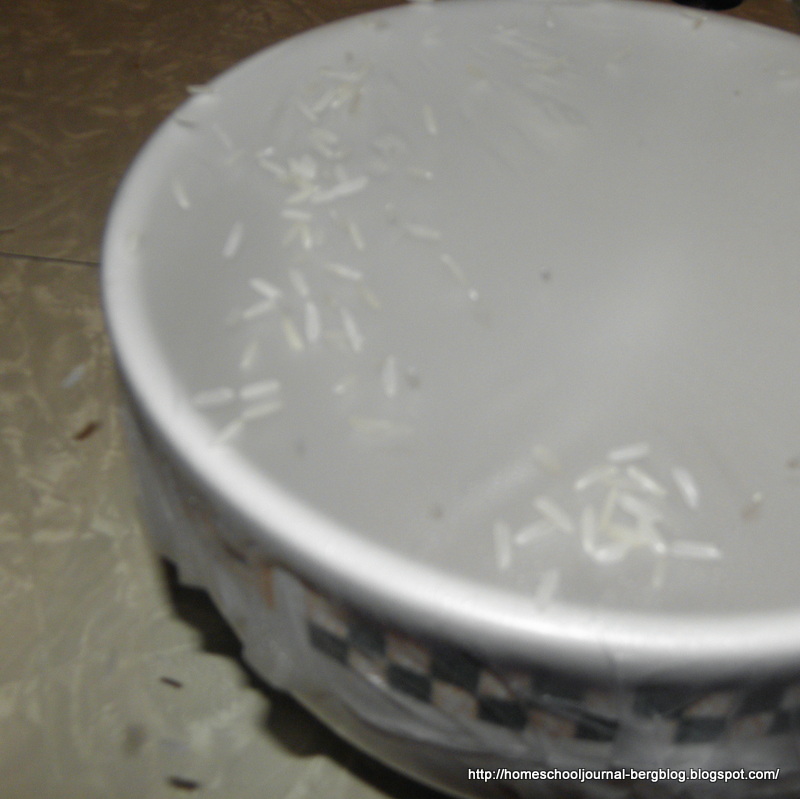How Sound Travels
The medium through which sound waves most often travel is air! Sound causes air to oscillate (move up and down) when it travels. You can see this by the following demonstrations.
Cut away the base of a plastic bottle and cover the hole with plastic wrap so that it is stretched tight. You might want to tape it to keep it secure. Light a candle and hold the bottle so that the opening at the neck of the bottle is pointed right at the candle. Flick or tap the plastic wrap so that you hear a dull thump.
It should blow out the candle!
The sound that came out of the bottle caused the air to oscillate enough so that the candle's flame blew out.
Now, take a large bowl and stretch some plastic wrap over it very tightly, just like you did the plastic bottle. Spread some rice over the plastic wrap.
Take a pot and bring it near the bowl, holding the pot so that the open end points toward the bowl. The thinner the pot, the better. We actually had to use a frying pan because our pot bottoms were too thick. Use a large wooden spoon to band against the bottom of the pot. Watch the rice.
When the oscillating air hits the plastic wrap, it causes the plastic wrap to start vibrating, The rice grains begin to bounce up and down. Can you see the grains falling off the bowl and on to the table?
This is a pretty good illustration of how your ear drum works. When the waves in air caused by sound enter your ear and the ear drum starts vibrating. Those vibrations are then transmitted to your brain and your brain interprets them as sound.
When we were finished with the experiments, my students had fun using the plastic bottle from the first experiment and, aiming it at the bowl with rice...
made the rice move quite dramatically!
Although we usually think of sound traveling through air, it might surprise you to realize that sound can not only travel through any substance in which it can oscillate in order to make waves, but that sound actually travels faster in liquids than it does in gases and it travels faster in solids than it does in liquids!
You can experiment with this by putting your ear to a wooden table and have someone knock on the table. Then have him knock again with you ear off the table. Which sound was louder?
Sound is a wave and if the atoms of a medium are close to one another, such as in a solid object, than can transmit this wave very effectively. If the atoms are farther apart, such as in a gas, it is hard for them to transmit the wave. You may not have noticed it since it is such a short difference, but the sound also travels more swiftly through solids than gases, for the same reason.
source: Exploring Creation with Physical Science, Jay Wile







